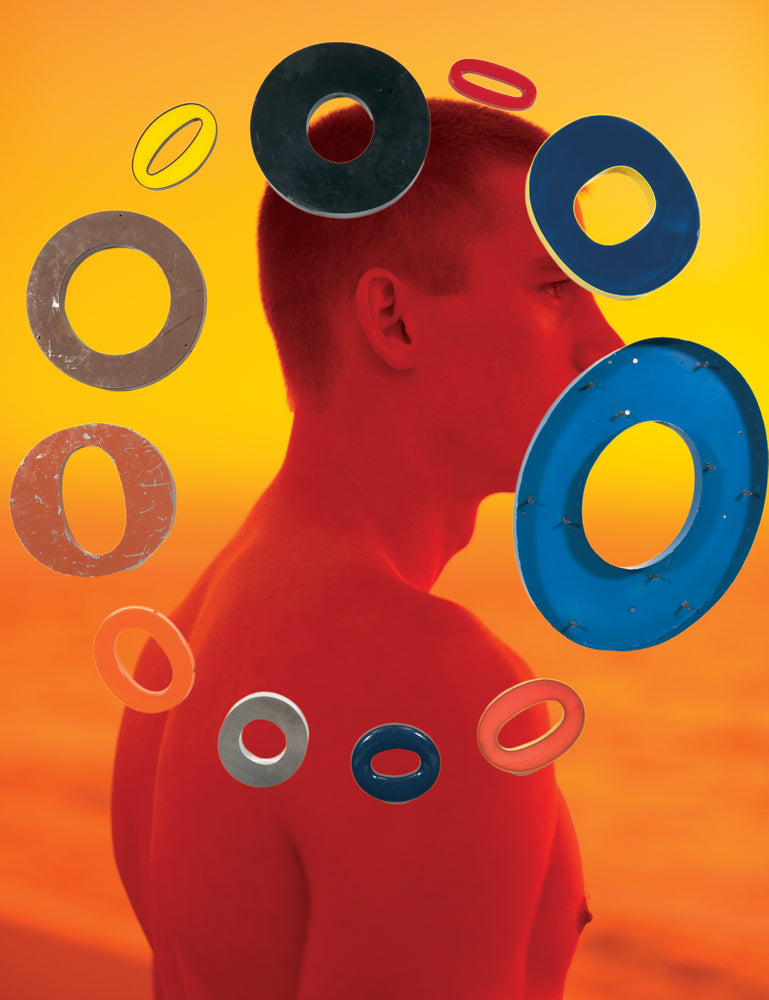
Jack Pierson. Chosen Words
JACK PIERSON. CHOSEN WORDS

“Brevity,” Polonius proclaims in Hamlet, “is the soul of wit.” For artist Jack Pierson, who is best known for his text-based sculptures, or “word pieces,” the most profound revelations are often delivered in the slightest turns of phrase. Scouring backcountry flea markets and Las Vegas junkyards for discarded signage, Pierson creates installations of aphorisms writ large in jumbled typographies, twisted nods to the marquees of Hollywood and Broadway. And like a certain bard from Stratford, Pierson also finds in the realm of the theatrical an all-too-obvious metaphor for daily life. After all, the world is but a stage.




That said, the venues Pierson had in mind when he first experimented with his word pieces in the late 1980s were a far cry from the rarefied air of the Globe. At the time, Pierson’s studio was located on Forty-Second Street and Seventh Avenue, a stone’s throw from the neon-bathed hub of Times Square. In those days, the neighborhood was dense with X-rated movie houses, sex shops, and peep-show emporiums like Show World and The Playpen. “Looking up at those marquees,” Pierson recalls, “I would see just the wildest, most interesting things advertised.”
Within a few short years, a city-led, corporate-backed push to clean up the area would see the majority of theaters shuttered for good. Remnants of the boarded-up porn palaces were dispersed, many ending up at the now defunct Billy’s Antiques and Props on the Bowery. During one fortuitous visit, Pierson uncovered a stack of discarded marquee lettering. Playing with different font combinations, he landed on the word “STAY.” Despite their steep price for the time — ten dollars each — Pierson ponied up. Shortly thereafter, a friend arranged the sale of the work for $1,500. By 1991, Pierson was exhibiting his word pieces at the legendary Pat Hearn Gallery in Soho.




In the years since, Pierson’s installations have evolved, becoming more nuanced in their wordplay and materials. They’ve also gotten bigger. For his 2013 exhibition at the LA–based Regen Projects, Pierson filled the entire gallery space with a hundred-foot-long sculpture consisting of fourteen-foot-high, silver-painted plywood letters that, taken together, spelled out “THE END OF THE WORLD.” Any similarity between the sculpture’s font and that of the iconic Hollywood sign looming over the city is far from coincidental. Indeed, if the bold-faced advertisements for erotic entertainment found in Times Square were influential to Pierson’s original word pieces, so, too, were the lurid displays of the film industry and the image of fame they project.
In 1989, shortly before his knockout show at Pat Hearn, Pierson embarked on a trip to LA, enticed out west by an unrequited love. He was heavily under the influence of John Rechy’s 1963 chronicle, City of Night, a gritty exposé of a young hustler’s journey across America. Feeling spurned, he took to walking the streets of LA, where, as he animatedly recounts it, “everything seemed so exciting.” With a disposable camera in hand, he set about documenting his experiences in the city.



When it became apparent that his romantic overtures were going nowhere, Pierson parted ways with his would-be beau and went to stay with Hollywood photographer Rocky Schenck at his Beachwood Canyon home. Reflecting back on that time, Pierson cites one photograph in particular as representative of his competing fascinations with both the seductiveness and superficiality of celebrity. Stepping out to wander around LA one day, Pierson found one of Schenk’s neighbors dressed as Lucille Ball.
“There was apparently an open casting call for a Lucy biopic,” he tells me, “and she was going out for an audition.” For Pierson, at that moment, “it all came together: here I was photographing Lucy, in Hollywood, but it wasn’t Lucy, and it wasn’t the fifties.” From that point on, Pierson’s work focused less on perpetuating the myths of celebrity and more on exposing the very ordinary hopes and desires that underpin them.


Myths, however, require a storyteller, and for Pierson, the ability to author the narrative of one’s life to fit the aspirations held for it lies at the heart of the American dream. Sitting in his East Village home amidst treasures collected from his wanderings well beyond Sunset, Pierson says, “My life is like a movie — it may be more like Midnight Cowboy than Fred Astaire, but I did what I set out to do.”


